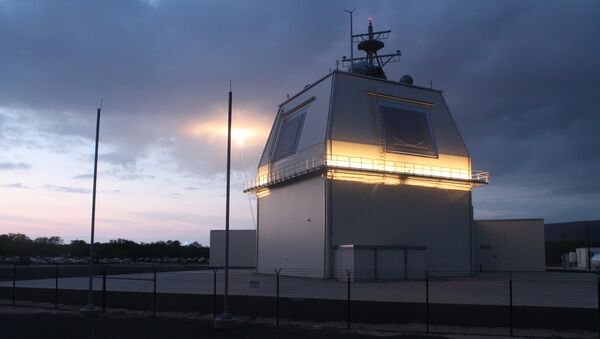The Japanese government’s plans to go ahead with the deployment of US-made Aegis Ashore ballistic missile defence systems have been met with resistance from local communities.
Japan wants to install two Aegis Ashore batteries on the ground in the north-west and south-west of the country, respectively. These batteries are expected to help Japan counter a potential ballistic missile threat from nearby North Korea or elsewhere, and are set to be deployed by 2025.
The Defence Ministry has narrowed down its choice of location for Aegis Ashore deployment to a site near the city of Akita in the prefecture of Akita and a second site in Yamaguchi.
Why Are Locals Protesting Against the Project?
But residents of Akita, a city of more than 300,000 people, are concerned about living in the vicinity of the missiles, as well as the missiles' proximity to schools and local government agencies that would potentially be coordinating a response to any emergency.
A July poll by a local newspaper showed opposition to the deployment standing at 60 percent.
Sixteen resident associations from the neighbourhoods surrounding the area of potential deployment, representing about 13,000 people, have voiced opposition to the project, citing the effects of radars and electromagnetic radiation on electronic devices and stress levels, as well as other security concerns. A protest movement has also been launched in Yamaguchi.
“I don't think Aegis Ashore is needed, but at least I want them not to put it right next to this residential area,” the Akita-based independent lawmaker Shizuka Terata told Bloomberg. “As the mother of a child, I hated the idea.”
Backed by major opposition parties, Terata defeated the ruling Liberal Democratic Party’s incumbent in July’s upper house election. The election in Akita was largely viewed as a referendum on the Aegis Ashore deployment.
A month before the election, the Defence Ministry admitted to relying on a faulty geographical survey which shortlisted the locations in Akita and Yamaguchi as the most appropriate ones. After it emerged that the data at some of the surveyed locations – which made them bad choices for potential deployment – was flawed, the Akita governor said the talks on deploying the anti-missile system in his prefecture were “back to square one.”
“I think people understand the need for it,” Itsunori Onodera, a former defence minister who has long advocated for the Aegis Ashore project, was quoted as saying by Bloomberg. “It's about where to put it. Of course there are a lot of people who would prefer not to have it near them.”
An Ever-Growing Defence Budget
Last week, Japan’s defence ministry released its budget request for fiscal year 2020, which called for spending to increase 1.2 percent to a record-breaking $50 billion. If approved, the national budget would see the eight consecutive hike in military spending since Shinzo Abe became prime minister in 2012.
The military specifically requested $114.6 million out of that sum for costs related to the Aegis Ashore programme. However, it did not request any funds for preparing a site for the weapons’ deployment.
The US State Department pre-approved the potential sale in January for an estimated $2.15 billion and greenlit the sale of dozens of SM-3 Block IIA interceptor missiles last week.
Tokyo approved the deployment of the Aegis Ashore land-based missile defence system in December 2017, following a ballistic missile test by North Korea.
Japan is currently protected by four destroyers equipped with US Aegis missile defence systems carrying SM-3 intercept missiles as well as modernised surface-to-air PAC-3 ballistic missile interceptors.




